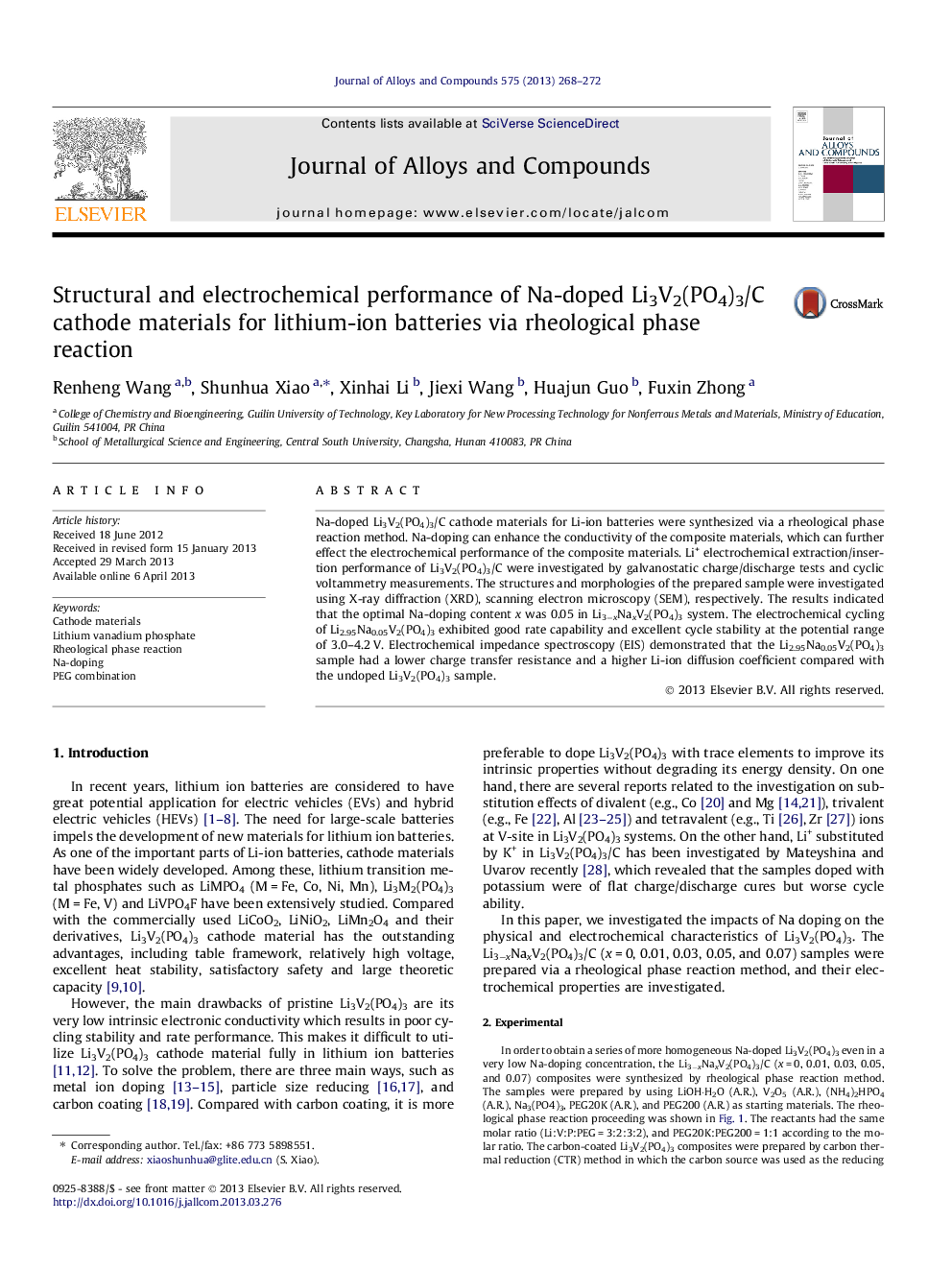| Article ID | Journal | Published Year | Pages | File Type |
|---|---|---|---|---|
| 1613494 | Journal of Alloys and Compounds | 2013 | 5 Pages |
•Na-doped Li3V2(PO4)3/C cathode materials for Li-ion batteries were synthesized via a rheological phase reaction method.•Li2.95Na0.05V2(PO4)3 exhibited good rate capability and excellent cycle stability.•Li2.95Na0.05V2(PO4)3 sample had lower charge transfer resistance compared with the undoped Li3V2(PO4)3 sample.
Na-doped Li3V2(PO4)3/C cathode materials for Li-ion batteries were synthesized via a rheological phase reaction method. Na-doping can enhance the conductivity of the composite materials, which can further effect the electrochemical performance of the composite materials. Li+ electrochemical extraction/insertion performance of Li3V2(PO4)3/C were investigated by galvanostatic charge/discharge tests and cyclic voltammetry measurements. The structures and morphologies of the prepared sample were investigated using X-ray diffraction (XRD), scanning electron microscopy (SEM), respectively. The results indicated that the optimal Na-doping content x was 0.05 in Li3−xNaxV2(PO4)3 system. The electrochemical cycling of Li2.95Na0.05V2(PO4)3 exhibited good rate capability and excellent cycle stability at the potential range of 3.0–4.2 V. Electrochemical impedance spectroscopy (EIS) demonstrated that the Li2.95Na0.05V2(PO4)3 sample had a lower charge transfer resistance and a higher Li-ion diffusion coefficient compared with the undoped Li3V2(PO4)3 sample.
